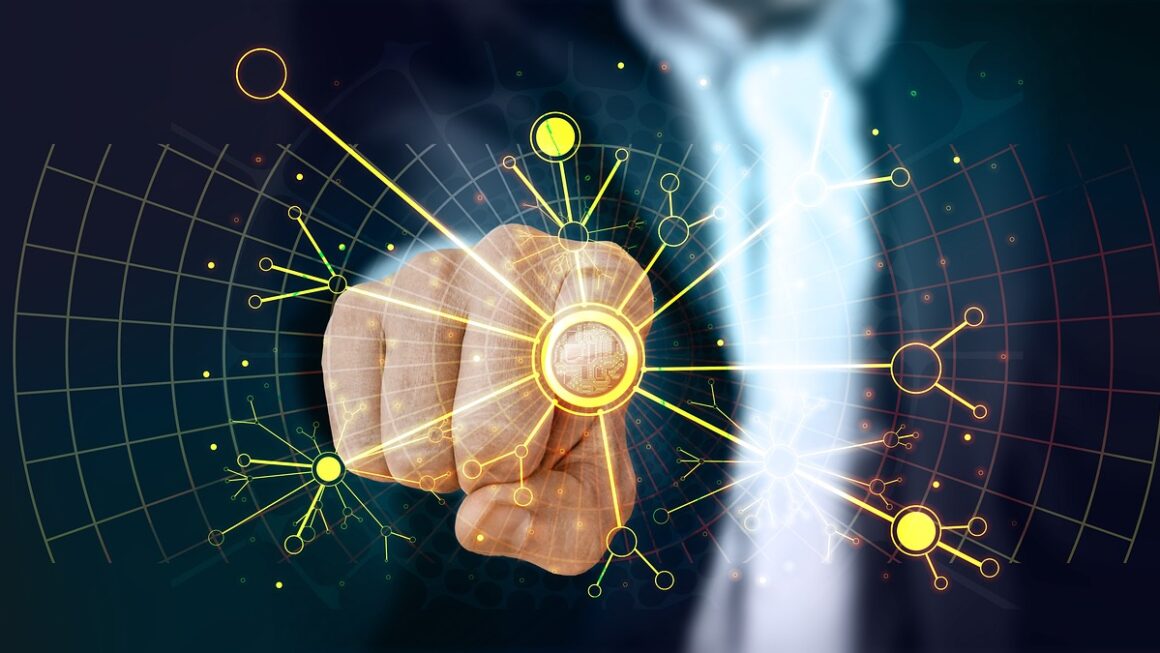Imagine a world overflowing with data, but without labels to guide you. How do you make sense of it all? That’s where unsupervised learning comes in, offering powerful techniques to uncover hidden patterns, structures, and relationships within datasets, even when you don’t know what you’re looking for. This blog post delves into the intricacies of unsupervised learning, exploring its core concepts, algorithms, and real-world applications, equipping you with the knowledge to leverage its potential for your own data-driven endeavors.
Understanding Unsupervised Learning
Unsupervised learning is a type of machine learning algorithm used to draw inferences from datasets consisting of input data without labeled responses. Unlike supervised learning, which relies on labeled data to train a model, unsupervised learning algorithms are left to discover patterns and relationships on their own. This makes it particularly useful for exploratory data analysis, anomaly detection, and customer segmentation, where the underlying data structure is unknown or difficult to define beforehand.
Key Characteristics of Unsupervised Learning
- No Labeled Data: The defining feature of unsupervised learning is the absence of target variables or labels. The algorithm works directly with the input data.
- Pattern Discovery: The primary goal is to identify hidden patterns, structures, and relationships within the data.
- Exploratory Analysis: Unsupervised learning is often used as a first step in data analysis to gain insights and inform further investigations.
- Flexibility: Algorithms can adapt to different types of data and uncover various types of patterns.
Examples of Unsupervised Learning Tasks
- Clustering: Grouping similar data points together based on their characteristics.
- Dimensionality Reduction: Reducing the number of variables in a dataset while preserving important information.
- Anomaly Detection: Identifying data points that deviate significantly from the norm.
- Association Rule Learning: Discovering relationships between different items in a dataset.
Popular Unsupervised Learning Algorithms
Several powerful algorithms fall under the umbrella of unsupervised learning. Each algorithm utilizes different approaches and is suitable for different types of data and problems.
Clustering Algorithms
Clustering algorithms aim to partition a dataset into groups (clusters) of similar data points. Here are a few common clustering techniques:
- K-Means Clustering: This algorithm aims to partition n observations into k clusters, in which each observation belongs to the cluster with the nearest mean (cluster centers or cluster centroid), serving as a prototype of the cluster. The algorithm iteratively assigns data points to the nearest cluster and recalculates the cluster centers until convergence. The success of K-Means heavily relies on choosing an appropriate value for k, which can be determined using techniques like the elbow method or silhouette analysis.
- Hierarchical Clustering: This approach builds a hierarchy of clusters, either by starting with each data point as its own cluster and merging them iteratively (agglomerative), or by starting with one large cluster and dividing it iteratively (divisive). Hierarchical clustering doesn’t require specifying the number of clusters beforehand, and the resulting hierarchy can be visualized using a dendrogram.
- DBSCAN (Density-Based Spatial Clustering of Applications with Noise): DBSCAN groups together points that are closely packed together, marking as outliers points that lie alone in low-density regions. It is particularly effective at identifying clusters of arbitrary shapes and handling noisy data. Two key parameters for DBSCAN are epsilon (the radius of the neighborhood) and minPts (the minimum number of points required to form a dense region).
Dimensionality Reduction Algorithms
Dimensionality reduction techniques aim to reduce the number of variables in a dataset while preserving important information.
- Principal Component Analysis (PCA): PCA transforms a dataset into a new set of variables called principal components, which are uncorrelated and ordered by the amount of variance they explain. By selecting only the top principal components, you can reduce the dimensionality of the data while retaining most of the relevant information. PCA is widely used for data visualization, noise reduction, and feature extraction.
- T-distributed Stochastic Neighbor Embedding (t-SNE): t-SNE is a non-linear dimensionality reduction technique particularly well-suited for visualizing high-dimensional data in lower dimensions (typically 2 or 3). It focuses on preserving the local structure of the data, making it effective for visualizing clusters and identifying patterns. t-SNE is computationally intensive and sensitive to parameter tuning, but it can provide valuable insights into complex datasets.
Association Rule Learning
- Apriori Algorithm: The Apriori algorithm is used to discover association rules, which describe the relationships between different items in a dataset. It is commonly used in market basket analysis to identify products that are frequently purchased together. The algorithm works by iteratively finding frequent itemsets (sets of items that occur together frequently) and then generating association rules based on these itemsets. Key metrics for evaluating association rules include support, confidence, and lift.
Practical Applications of Unsupervised Learning
Unsupervised learning finds applications across various domains, offering valuable insights and solutions to complex problems.
Customer Segmentation
- Goal: To divide customers into distinct groups based on their characteristics and behaviors.
- Algorithm: Clustering algorithms (e.g., K-Means, Hierarchical Clustering) can be used to group customers based on purchase history, demographics, website activity, and other relevant data.
- Benefits: Targeted marketing campaigns, personalized recommendations, improved customer service, and optimized product development.
- Example: A retail company uses K-Means clustering to identify distinct customer segments, such as “value shoppers,” “loyal customers,” and “occasional buyers.” They then tailor their marketing messages and promotions to each segment’s specific needs and preferences.
Anomaly Detection
- Goal: To identify data points that deviate significantly from the norm.
- Algorithm: Anomaly detection algorithms (e.g., DBSCAN, Isolation Forest) can be used to identify fraudulent transactions, network intrusions, equipment failures, and other types of anomalies.
- Benefits: Fraud prevention, improved security, predictive maintenance, and enhanced quality control.
- Example: A bank uses an anomaly detection algorithm to identify suspicious credit card transactions based on spending patterns, location, and transaction amount. This helps them to prevent fraudulent activity and protect their customers. According to a report by Nilson, credit card fraud losses amounted to $28.65 billion globally in 2020, highlighting the importance of anomaly detection in the financial sector.
Recommender Systems
- Goal: To provide personalized recommendations to users based on their preferences and past behavior.
- Algorithm: Collaborative filtering techniques, a form of unsupervised learning, can be used to identify users with similar tastes and recommend items that those users have liked.
- Benefits: Increased sales, improved customer satisfaction, and enhanced user engagement.
- Example: An e-commerce website uses collaborative filtering to recommend products to users based on their browsing history, purchase history, and ratings of other products. This helps users to discover new products that they might be interested in and increases the likelihood of a purchase.
Data Preprocessing and Exploration
- Goal: To prepare data for further analysis and gain insights into its underlying structure.
- Algorithm: Dimensionality reduction techniques (e.g., PCA, t-SNE) can be used to reduce the number of variables in a dataset and visualize high-dimensional data in lower dimensions.
- Benefits: Improved model performance, reduced computational cost, and enhanced data understanding.
- Example: A marketing team analyzes customer data to identify key segments and buying behaviors to more effectively target customers, reduce marketing costs, and increase sales.
Challenges and Considerations
While unsupervised learning offers powerful capabilities, it’s important to be aware of its challenges and limitations.
- Interpretation: Unsupervised learning algorithms can identify patterns, but interpreting these patterns can be challenging. Domain expertise and careful analysis are needed to derive meaningful insights.
- Evaluation: Evaluating the performance of unsupervised learning algorithms can be difficult, as there are no ground truth labels to compare against. Metrics like silhouette score (for clustering) and reconstruction error (for dimensionality reduction) can be used, but they provide only a partial picture.
- Parameter Tuning: Many unsupervised learning algorithms have parameters that need to be tuned to achieve optimal performance. This can require experimentation and a good understanding of the algorithm.
- Scalability: Some unsupervised learning algorithms can be computationally expensive, especially when dealing with large datasets.
Conclusion
Unsupervised learning provides a valuable toolkit for extracting knowledge from unlabeled data. From clustering and dimensionality reduction to anomaly detection and association rule learning, these techniques unlock insights that would otherwise remain hidden. By understanding the core concepts, popular algorithms, and practical applications, you can harness the power of unsupervised learning to gain a competitive edge in today’s data-rich world. Embrace the challenge of exploring unlabeled data and discover the hidden patterns that can transform your business. Remember to consider the challenges involved, and always prioritize careful interpretation and evaluation of your results. The journey into the world of unsupervised learning is a journey of discovery, and the rewards can be significant.




